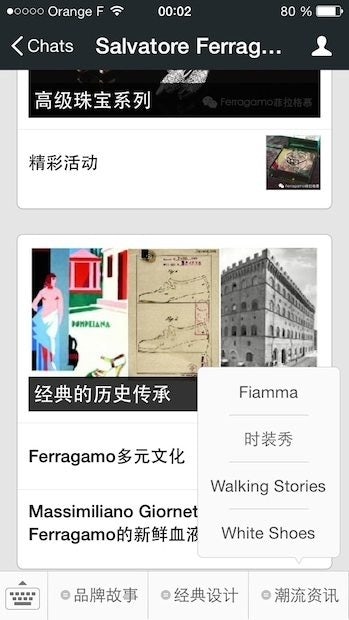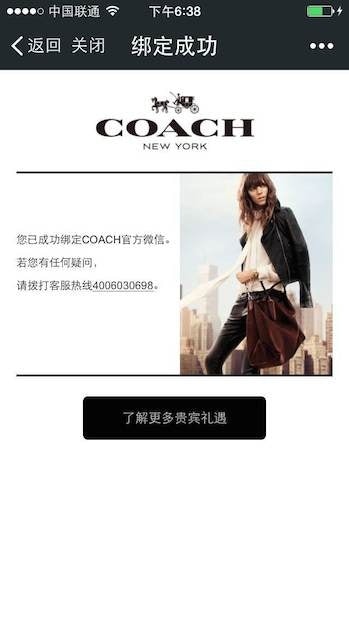
China's young professionals: mobile-savvy and ready to spend. (Hogan/Vogue China)
As we face a slowdown in the growth of global luxury sales in China, Hong Kong, and Europe, as well as a large change in terms of Chinese travelers’ profiles as they switch from group to independent travel, most brands are trying to reach a new type of more mature, more independent customer. Many of these customers are the HENRYs, which means “High Earners, Not Rich Yet.” This group appeared in the early 2000’s in Western markets and is now growing fast in the emerging ones.
The HENRYs in China are the epitome of the young, rising professional class that drives the economy and brands’ sales. Due to the increasing price of real estate, they might not have the cash to buy an apartment, but instead can travel, consume premium products, and let their network know about it. In China and the rest of East Asia, they represent the key growth target—especially for luxury brands. Here are several key ways to reach this demographic on Chinese social media:
Be More Targeted#
Messaging apps are the present and future of 1:1 communication and O2O activities#
. As Forrester reported on in its latest report on messaging apps, WeChat is "turning into a marketing platform" by connecting brands directly to huge audiences. The idea of increasing ROI on social media by pushing as many messages as we can to an underdetermined audience is over. We have clearly moved from a one-to-many communication model—which in China meant Weibo—to one of 1:1 communication, which means using apps like WeChat and KakaoTalk.
Perform database segmentation and offer tailor-made push messaging messages.#
"Going mobile” doesn’t only mean switching from one platform (laptop) to another (mobile); it also means changing users’ habits of consumption and ways of reaching brands. Even more, messaging apps allow brands to segment their database and, based on customer profiles, location, gender, and interest, push a specific message to them. As a result, brands can increase their ROI, brand awareness, and customer engagement.

A VIP feature on WeChat for real estate developer Vanke.
Communicate Less but Communicate Better#
Accept reducing the frequency of advertising and focus on the editorial quality.#
Content quality is the key more than message frequency. You don’t lose anything by not communicating with your customers on a messaging app. Each push message has to be relevant, targeted, and, moreover, interesting from a user’s point of view rather than from a brand’s point of view. Most of the marketing and digital directors won’t feel comfortable once they learn the details about the number of messages they’re allowed to send on messaging apps such WeChat, Line, or KakaoTalk. If we take the example of WeChat, the push message restriction of four messages a month on the “Service” account makes the recruitment on the platform difficult, but they need to take into account that this number is what works for this type of platform.
Give more freedom to the user and increase the pull market activities.#
WeChat is a closed private platform versus Weibo or Facebook, which are public open platforms (most of the contacts you have into your WeChat contact list are those you know in real life). To benefit from this, companies can build advanced mini-sites with a lot of potential add tools and services: e-commerce store, GPS store locators, sampling functions, 3-D integration, and live customer service.

Salvatore Ferragamo's WeChat mini-site.
Connect offline retail experience and online day-to-day communication.#
Rather than generic and unpersonalized advertising, brands should focus more on service and add value, utility, and increased connections between online platforms (e-commerce) and offline retail (stores). One important note is that O2O doesn’t necessarily mean from online to offline, but can work the other way around: brands can recruit from an offline channel (press, event, store, print, or airport) and keep in touch with the new member or follower via the messaging app account. Merging the in-store experience and online repetitive purchase is a key point that brands should leverage.

Coach offers n WeChat.
The Next Step: The Rise of Social CRM#
Messaging apps are actually turning from a social media tool to a social CRM platform.
The way users—including HENRYs—are purchasing and communicating pushes brands to invest in real CRM programs, since 20 percent of the best customers typically account for 70 percent of a brand’s revenue.
Find a good balance between the push and pull of marketing by lowering the frequency of push messages and increasing the editorial quality. If you are a fashion or cosmetic company, make sure to segment your database by gender. For example, don’t push a woman’s cosmetic winter product in October to a man living in Hong Kong.
Social CRM is now a key point for all businesses. The priority for businesses who want to reach China’s HENRYs is now figuring out how to translate social media into a clear and stable KPI, increase the impact of a message by playing on the push frequency and timing, and tailor content to important customers.
Alexis Bonhomme is the general manager at Curiosity China.